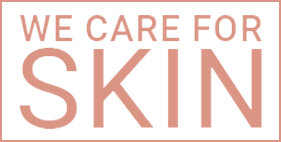A study conducted in 2014 reports that 60% to 70% of Filipino women have experienced sensitive skin, including dry, itchy, and red face. It has been eight years since the study, but the problem of dry skin is still widespread until now. While many dermatological treatments and lifestyle changes address dry skin, the immediate solution to treating it is still using moisturizers. The proper use of moisturizer is effective in hydrating the face, maintaining elasticity, preventing dryness, and avoiding the long-term effects caused by dry skin.
You may have been using expensive or experimenting with different moisturizers, but you are still puzzled why you have dry patches on your skin. It does not necessarily mean that your skincare products are not working. Instead, you may be misusing your moisturizers. Read on to learn how to apply moisturizer the way your skin needs.
Understanding Dry Skin
Have you ever wondered why soap, lotion, or skincare products use rose petals in TV advertisements? One rose petal is applied with a product while the other is not, and after a few hours, the rose petal without the product looks wilted. Well, the same analogy applies to our skin. Like rose petals, our skin retains water and natural oils to keep it soft, smooth, and firm. Being exposed to factors such as hot weather, humidity, and pollution, strips off the water and natural oils of the skin, causing the skin to dry out, loosen, and flake off.
There are many reasons why you may have dry skin. As mentioned, external factors such as hot and humid weather, cold weather with low humidity, and air pollution can affect our skin. There are also medical reasons for having dry skin, such as stress, drinking diuretics like coffee, aging, and malnutrition. We face some of these factors daily as we go about our day. Exposure to these factors causes dry skin, and if not appropriately addressed, it will likely speed up aging and cause dark spots, wrinkles, dry patches, and sensitive skin.
Our skin needs help to retain hydration and maintain its elasticity. There is no strict rule on how to apply moisturizer but using one every day is advisable.
How to Apply Moisturizer
The best time to apply moisturizer is after you cleanse and wash your face. Moisturizers act as a sealant to lock in the moisture in the skin. At the same time, it soothes the skin and adds an extra layer of hydration. Whether morning or night, the time of application does not matter as long as you apply it to your skin whenever it needs moisturizing.
Choosing the correct type of moisturizer is as important as knowing when to apply it. There are three general types of moisturizers:
Emollients contain oil and lipids, which help treat cracked and flaking skin. Ingredients such as shea butter and collagen are emollients. Creams and lotions are examples of moisturizers that contain emollients, and they are usually thick and heavy when applied to the skin.
Occlusives are mostly oil-based and moisturize the skin by forming a protective lipid barrier that prevents water from evaporating out of the skin. The most famous kind of occlusive is petrolatum, the main ingredient of petroleum jelly, which our grandmothers testify as a cure to every dry skin problem we have. Another occlusive is mineral oil or more commonly known as baby oil.
Humectants attract water from the air and into the skin, hydrating the skin. Glycerin, a famous ingredient in many skin care products, is a humectant.
These moisturizers are very effective for dry skin - restoring hydration, filling in cracks, smoothing dry patches, and protecting the skin from irritation and dryness.
Moisturizer Delivery Systems
Like the type of moisturizer used, the delivery system or vehicle used to deliver the moisturizers to the skin is also crucial to achieving good hydration and encouraging adherence to the routine. Moisturizers come in the form of lotion, cream, ointment, gel, and oil.
Ointments - dermatologists typically prescribe ointments to address dry skin when the cause is genetic or medical. They do not evaporate; hence tend to stay longer on the skin surface, making them ideal to use in conditions like eczema, psoriasis, and wound disinfection. They are effective as a delivery system, but the greasy feeling after applying them makes people turn away for the most part.
Lotion, gel, and cream - these moisturizers are common and readily available in the market, and the difference mostly is the thickness and absorption of these products into the skin.
-
Lotions generally do not contain oils, making them lightweight and non-greasy. They are easily spread and ideal for hairy areas like the arms and legs. There are tons of lotions available in the market, from name brands to specialty ones.
-
Creams are emulsions or a mixture of oils and water. They are less viscous, more spreadable, less greasy, and evaporate quicker compared to ointments. Although they are less hydrating than ointments, people tend to prefer them over ointments because of the less greasy texture.
-
Gels are usually a mixture of water or alcohol and other ingredients and are easily absorbed by the skin. They liquify upon contact with the skin, making them spreadable and easily absorbed. This lightweight and non-greasy texture makes them a popular choice in the Philippines, given the humid weather. Aloe vera gel is one of the most well-known and widely used examples.
Oil moisturizers - are natural extracts from plants and vegetables and act as an occlusive. Plant oils are primarily used as moisturizers except for squalene derived from shark liver. Despite being natural, not all plant oils are created equal and beneficial. They differ mainly in free fatty acid (saturated and unsaturated) content. For example, oils that contain oleic acid can disrupt the skin barrier and cause dermatitis when applied constantly to the skin.
-
Sunflower Oil – sunflower oil has gained popularity lately due to its moisturizing and other skin benefits. It contains linoleic acid, which is known to prevent moisture loss from the skin.
-
Virgin Coconut Oil – Similar to sunflower oil, virgin coconut oil or VCO also prevents moisture loss from the skin. It also has the added benefit of being antimicrobial. VCO is widely available in the market, especially in the Philippines, where some brands are being produced.
-
Jojoba Oil – unbeknownst to many, jojoba oil is the closest match to natural sebum (oil produced by our skin). Sebum is inherently beneficial to the skin; however, the skin can overproduce sebum and clog the pores, which can cause acne. Despite being similar in structure to sebum, Jojoba oil is non-comedogenic, meaning it does not clog the pores. It has also been found to help in conditions with disrupted skin barrier such as contact dermatitis, eczema, and even scar management.
An example of a jojoba oil product is NNO Nourishing Night Oil. It also contains Vitamin E, which is usually associated with skin care products as it protects the skin from the harmful effects of sunlight, keeps the skin soft and elastic, and has antioxidant properties, which help with skin dullness and even hyperpigmentation. Aside from the abovementioned benefits, jojoba oil has anti-inflammatory effects and low viscosity, making it easily absorbed by the skin. The combination of Jojoba oil and Vitamin E in a moisturizer amplifies these benefits; with Jojoba oil acting as an occlusive and Vitamin E as an emollient.
As for the question of when to best apply moisturizer, the answer lies in which type of delivery system you plan to use. Different moisturizers have pros and cons, and the choice would depend on your preference. Gels and creams are preferred during the day because of their light texture. Oil moisturizers, on the one hand, do not evaporate easily but are quickly absorbed and non-greasy making them ideal for incorporating as part of your nightly routine.




